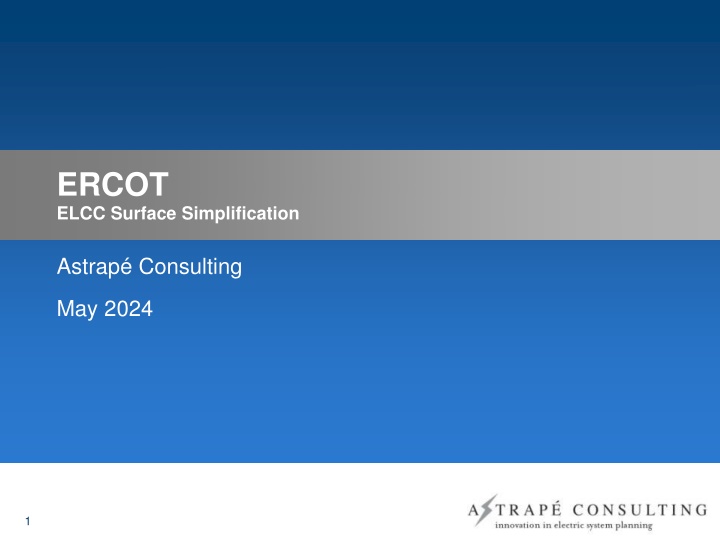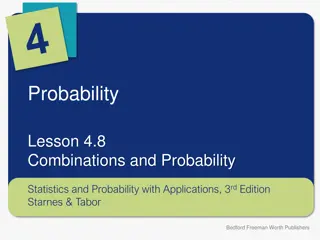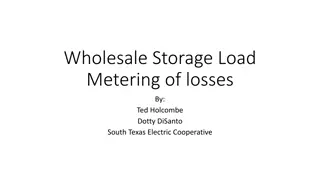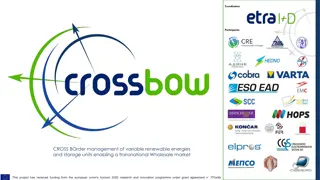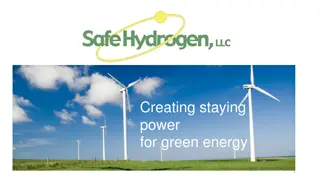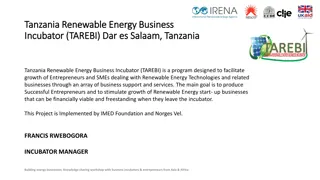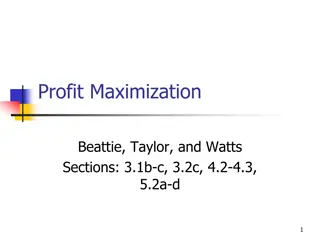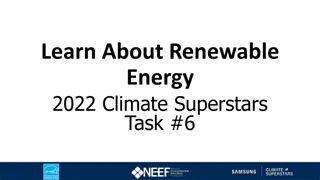Investigation of Marginal ELCC Generation Methodology for Renewable Technologies with Storage Combinations
This project aims to develop a methodology to calculate Marginal ELCCs for non-dispatchable technologies like Solar PV and Wind, along with various storage durations. It proposes leveraging SERVM for LOLE Events, analyzing peak shaving capabilities of storage technologies, and evaluating ELCC via simulations and analytical approaches.
Download Presentation

Please find below an Image/Link to download the presentation.
The content on the website is provided AS IS for your information and personal use only. It may not be sold, licensed, or shared on other websites without obtaining consent from the author.If you encounter any issues during the download, it is possible that the publisher has removed the file from their server.
You are allowed to download the files provided on this website for personal or commercial use, subject to the condition that they are used lawfully. All files are the property of their respective owners.
The content on the website is provided AS IS for your information and personal use only. It may not be sold, licensed, or shared on other websites without obtaining consent from the author.
E N D
Presentation Transcript
ERCOT ELCC Surface Simplification Astrap Consulting May 2024 1
Purpose To investigate a methodology to generate marginal ELCCs by technology for 2 non-dispatchable technologies (e.g. 0-75GW Solar PV, 0-75GW Wind) and unlimited combinations of storage duration (X GW of 2 Hr Battery, X GW of 4 Hr Battery, X GW of 8 Hr Battery) Approach should allow the user to define any given portfolio within a specified range Ideally this approach will avoid requiring prohibitively high amount of simulations to generate ELCCs 2 2
Proposal Simplify problem by leveraging SERVM to produce numerous LOLE Events for combinations of solar and wind at 0.1 LOLE, and utilizing out of model approach to establish storage value for each portfolio Wind MW 45000 30000 35000 40000 50000 55000 60000 20000 25000 30000 35000 40000 45000 50000 Solar MW Simulated cases at 0.1 LOLE with LOLE Events cataloged 3 3
Proposal Contd For each solar and wind combination at 0.1, and for each day with any EUE, the peak shaving capability of storage technology/technologies can be evaluated 4 4
Storage Accreditation Storage is used to shave the net load peak in ascending order of storage duration Peak shaved MW for each class of duration defines its average ELCC Resource Class Installed MW Total Peak Shaved (MW) Avg ELCC (%) Avg Output during energy constrain ed period (MW) Marginal ELCC (%) Critical Hours Peak Shaved All Storage 12,000 10,425 - 10,012 - 2 Hour 4,000 2,425 61% 2,012 50% 8 Hour 8,000 8,000 100% 8,000 100% 5 5
ELCC Calculations Average ELCC Renewables Heuristic: reduction from gross load peak to net load peak Calculated as portfolio ELCC from SERVM simulations Technology ELCCs allocated via integration method Storage Heuristic: net load peak shaving Calculated as portfolio ELCC from analytical approach calibrated with SERVM simulations In the case of multiple durations of storage, value can be allocated amongst durations according to each tranche s contribution to the reduction in net load peak Marginal ELCC All technologies assessed at average output during storage constrained periods 7 7
Expected Process Summary Portfolio User defines Solar, Wind, Battery Penetration LOL events are pulled from corresponding solar and wind penetration cases Event Lookup For each LOL event day, storage performs peak shaving Storag e Value For differing storage durations assessed, average ELCC is allocated based on reduction in net load peak Storag e Class Renewable average ELCC is assessed from integration method from SERVM simulations Solar + Wind Reduction in net load peak for each duration is probability weighted into one annual and/or seasonal value Aggregate Marginal ELCC is separately calculated for storage and renewables based on output during critical hours Marginal ELCC 8 8
Expected UI Input MW Duration (Hr) Solar 30,000 - Wind 35,000 - Storage 1 5,000 2 Storage 2 2,000 4 Out of model storage dispatch simulation and MW allocation Output MW % Renewable Portfolio Value (Average) 30,000 - Solar Average ELCC 5,000 16.6% Wind Average ELCC 10,000 28.6% Storage Total Peak Shaved 5,000 71% Storage 1 Allocated Average ELCC 4,000 80% Storage 2 Allocated Average ELCC 1,000 50% 9 9
Discussion and Observations Approach is expected to avoid limitations seen in ELCC Surface approach (limited flexibility in selecting battery duration and combinations of batteries) Will require testing between the proposed method and a full ELCC approach within SERVM to ensure reasonableness of results Desired portfolios not included within original renewable combinations simulated (Green Cells on slide 3) simulated will require interpolation of results between levels to ensure accurate ELCC values 10 10
